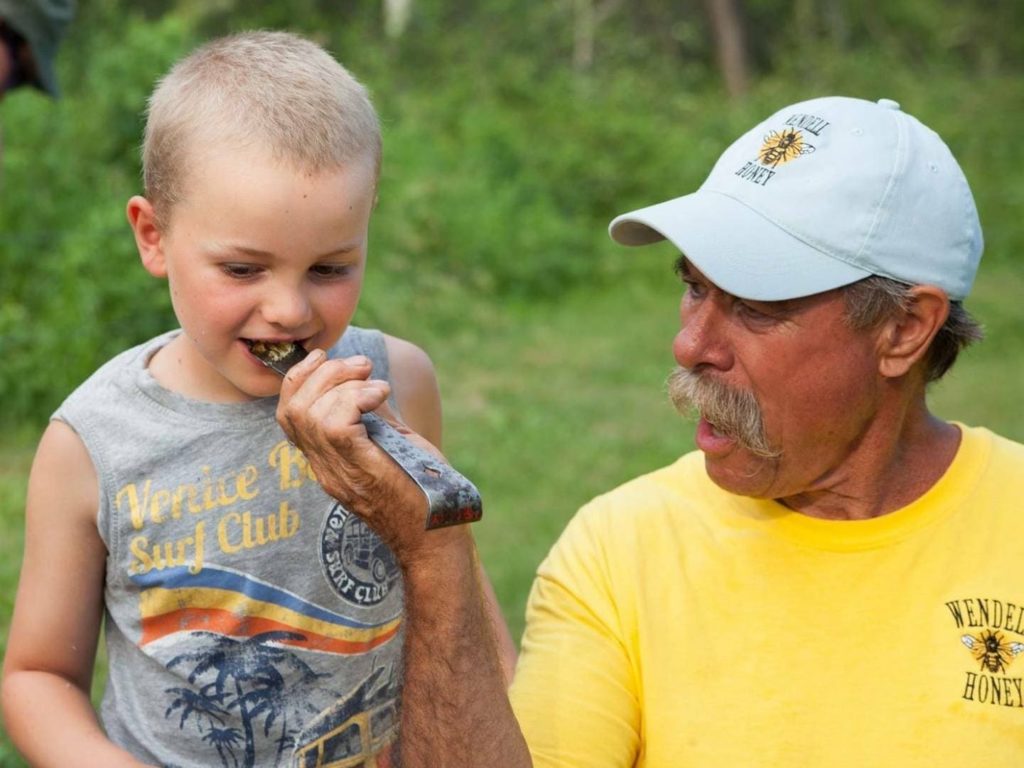
How Do You Know if Your Real Raw Honey is Real and Raw?
There’s a lot of dishonest marketing out there. Sadly, honey is the 3rd most adulterated food in the world (lagging behind only olive oil and infant formula). Report after report has been coming out for over a decade, finding that much of what’s labeled as “honey” on supermarket shelves, isn’t just honey. From the USA to India to Europe and the UK , the fraudulent practice of adding syrups of processed sugars to increase profits while luring consumers with low prices for fraudulent products shows no signs of slowing down. Not only is this defrauding customers by giving them a cheaper product that’s inferior to what they’re paying for, but people who are choosing to eat honey for health reasons are getting a product with some of the health benefits of honey being replaced by the harms of processed sugars, the very harms they were likely trying to avoid by buying honey.
Aren’t there home tests for fake honey?
What’s a consumer to do to ensure that they’re buying real honey? There are plenty of DIY tests out there on the internet that claim to allow you to detect whether your honey is pure or adulterated. I don’t think any of these home tests are reliable as it is very difficult to detect adulterated honey. Once our honey harvest starts, I intend test them myself, and will post my results after I do.

A better question
UK Honey Sommelier, Sarah Wyndham Lewis brilliantly posed this queston: “How do you know it’s real honey if you don’t know the beekeeper?”1 I love this, because it distills a lot of the issues with commercial honey into a single question.
More on honey marketing
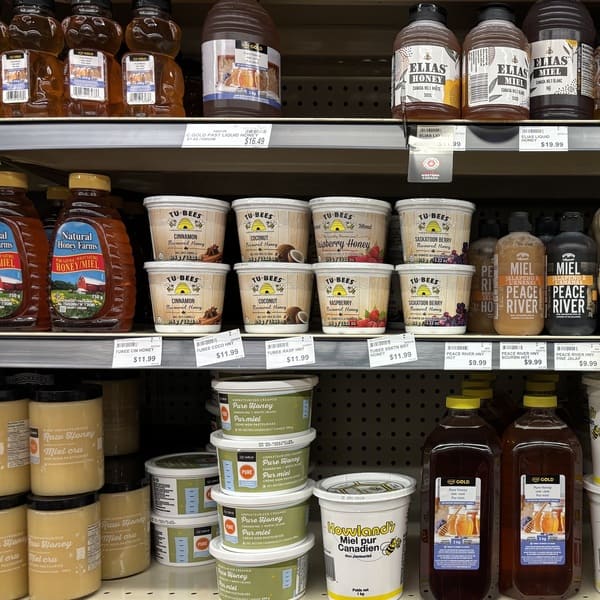
This question includes the fact that some honey on shelves has been adulterated by packagers that add cheap sugar syrups to their honey. But it also implies more than that. Honey is a competitive product, and marketing isn’t always honest, or it can be subtly misleading. Two commonly misunderstood terms widely used to market honey are “organic honey” and Manuka’s UMF or MGO. Organic honey, especially USDA-certified is particularly complex and somewhat misleading, with USDA-certified organic generally only applying to imported honey rather than American honey. MGO and UMF measure how suitable the honey is for making heat-sterilized wound dressings, not how healthy it is to eat. I would say that if you’re looking fro delicious, healthy honey, you can largely ignore those stickers that mostly serve to raise the price.
Because raw honey is healthier than processed honey, the popularity of raw honey is increasing. The variety of raw honey brands available on store shelves has risen with demand. Detecting whether honey is actually raw or not is relatively straightforward in a specialized food laboratory, but almost impossible for a consumer. A very common American brand faced a class action lawsuit, alleging (with laboratory evidence), that its popular brand of “raw honey” had been heated above the accepted temperature for raw honey, defrauding consumers.
Let your senses guide you - compare different honeys
But in Sarah Wyndham Lewis’s question there’s also subtle reference to the amount of processing that many honey brands undergo before reaching the shelf. Most honey brands purchase honey in bulk from beekeepers like us. First the honey usually needs to be heated to get it from the bulk drum to the jar. Premium bulk honey (like ours) is then usually blended with lower grade honey to achieve a middle grade, lowering costs and finding a way to sell the cheaper, lower grade honey. Much of the honey is heated again to undergo pasteurization to kill harmless, naturally occurring yeasts, and ultra-filtered to remove any small particles of pollen, wax or propolis in the honey. Natural beeswax is completely harmless when eaten, while pollen and propolis are actually healthy. Furthermore, removing the pollen makes it much more difficult to determine the source of the honey and whether it has been adulterated. The heating process denatures enzymes that give raw honeys their unique flavour profiles and also confer many raw honey’s well-evidenced health benefits. The final result is a generic flavored, homogenous amber liquid that has a long shelf life, but decreased health benefits. Finally, many store-shelf honeys have been sitting around deteriorating at room temperatures in warehouses for months before reaching the shelf. Fresh raw honey is the best honey!
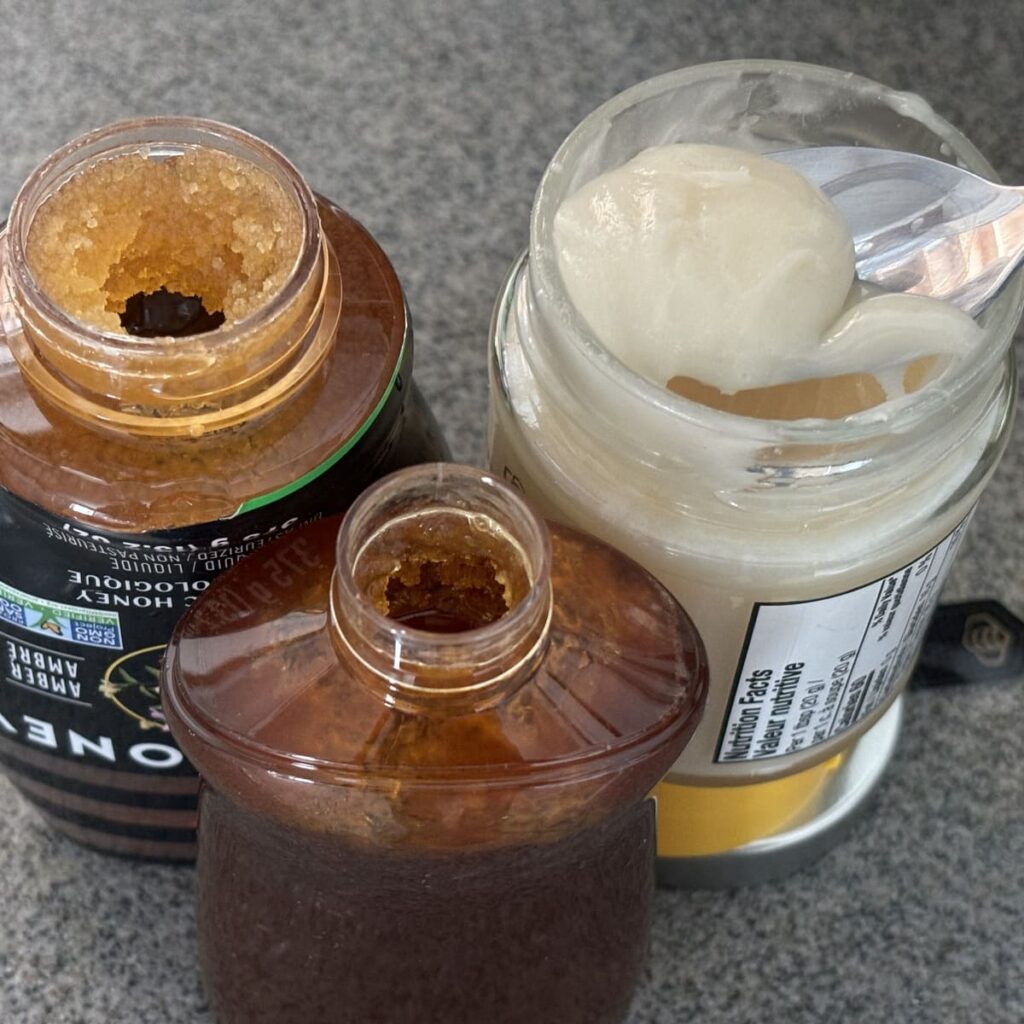
Become a honey snob
As someone who loves honey in all its diversity and character, Sarah Wyndham Lewis has this to say about those pasteurized, blended and processed supermarket brand honeys: “What I’m asking people to do is to cross taste [unblended, natural] incredible honeys with supermarket honey and try and understand that supermarket honey isn’t honey…it’s a blend, and anything that says ‘blend’ you just don’t touch: you put it straight down back on the shelf. There’s no reason to blend honey, ever. [Supermarket honey] is an anonymized global product that’s been very highly processed…Supermarket honey has taste, while real honey has flavours. We want to make people into honey snobs.”
I couldn’t agree more.
When you purchase honey directly from the producer, it is likely going to be raw, unblended honey with all the complex flavours imparted by the blossoms, the weather, the soil and the bees. I believe that most beekeepers are honest and would not add sugar syrup to their honey. Not to say that even purchasing directly from a beekeeper absolutely guarantees your honey will be pure honey: it is possible for beekeepers to introduce sugar syrup into their honey, accidentally usually for amateur beekeepers, or intentionally or negligently for unscrupulous commercial beekeepers. This is why it’s even better if you know the beekeeper. Then you can rest assured that you’re getting real, unblended honey.
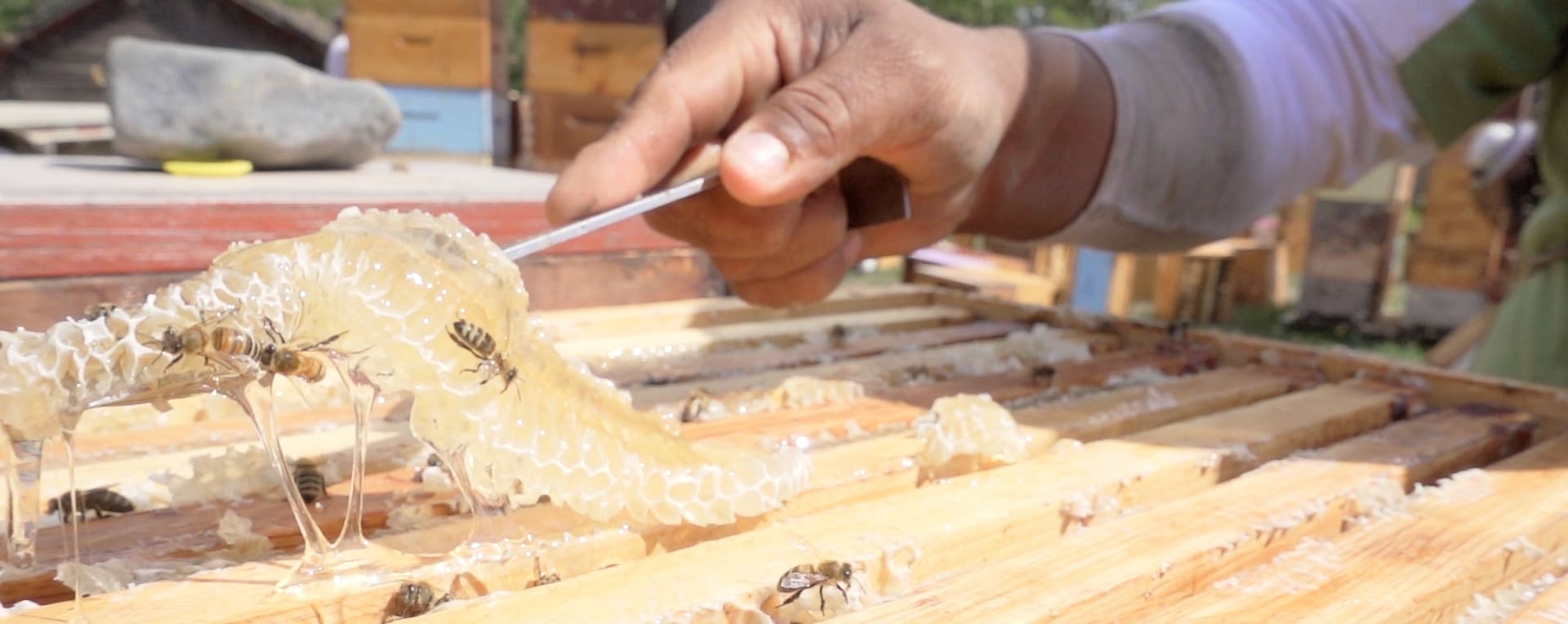
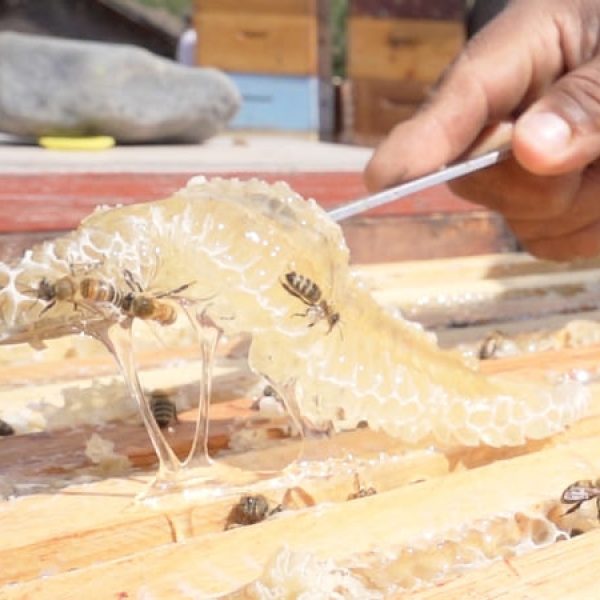
I think of the comparison between low-priced, big brand, blended, processed “honeys” and real, unblended, raw honey that you would get from a beekeeper as similar to the difference between drinking instant coffee, versus coffee made from freshly ground beans.
Of course, many people don’t know a beekeeper. When they had this realization, my parents, Tim and Isabel Wendell , were inspired to launch Wendell Estate Honey back in 2011. Their goal and hope was that by getting a real, raw honey packaged on the farm onto supermarket shelves, those people who don’t know a beekeeper could have access to real, natural honey straight from the beekeeper.
As honey afficionados ourselves, we love trying different honeys. We welcome any comments from any other honey afficionados. What’s your favorite honey and why?
Notes
- I got this from a podcast, “Hive Talkin – Episode 2” and I’d love to link to the podcast, but I was unable to find it online (only through the podcast app).
Jeremy Wendell
Share this story
